PCB Repair Logs Birdie Try: Difference between revisions
mNo edit summary |
mNo edit summary |
||
| Line 11: | Line 11: | ||
<tr class=""> | <tr class=""> | ||
<th scope="row" style="text-align:left; white-space: nowrap;">Pin Out</th> | <th scope="row" style="text-align:left; white-space: nowrap;">Pin Out</th> | ||
<td class="" style=""> | <td class="" style="">[http://wiki.aussiearcade.com.au/index.php/File:Jamma_pinout.png Jamma Pinout]</td> | ||
</tr> | </tr> | ||
Revision as of 13:37, 4 February 2013
Birdie Try
| File:Marquee birdie try.jpg | |
| PCB Image | Birdie Try PCB |
|---|---|
| Pin Out | Jamma Pinout |
Repairer: Womble
Forum Thread: Birdie Try PCB Repair
Another board from Quinny's hard rubbish board box was this one...
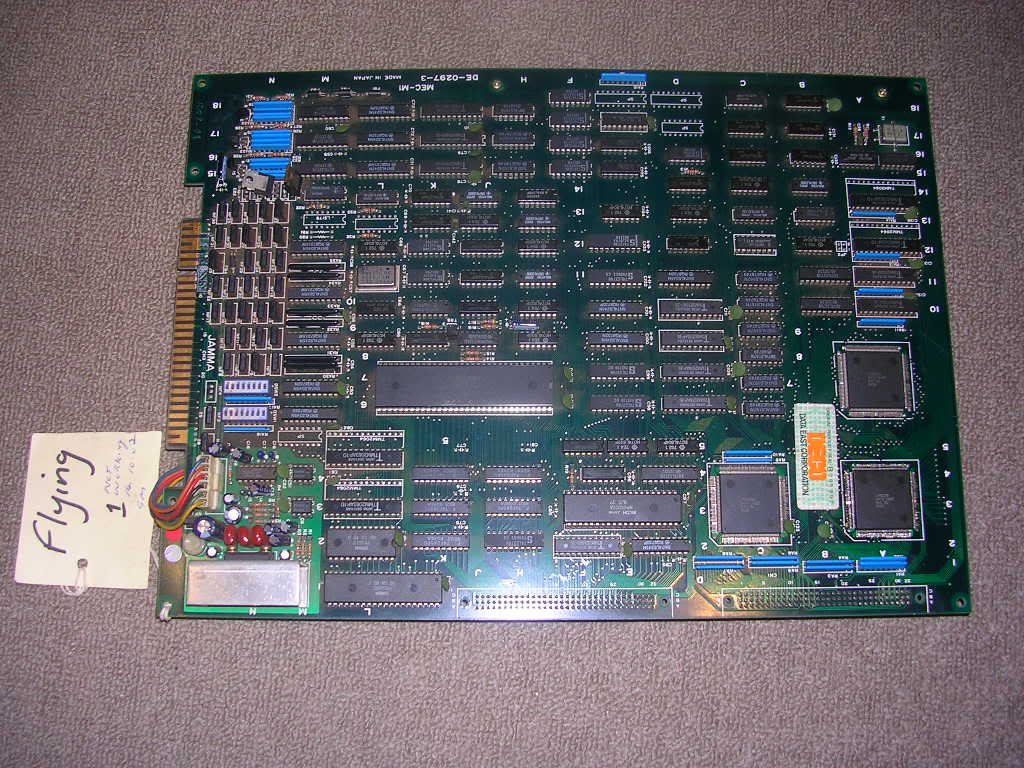
... it was labelled "Flying" for some reason and the label said it was faulty with the date 14th Oct 2002. There is no game called "Flying" so no idea what that was about, but I recognised the Data East main board so I was hoping for something decent from the 5 or so games released on it, Robocop was my number 1 wish, with Birdie Try a firm last on the wish-list. Of course it turned out to be Birdie Try
Still it is a Data East board so is beautifully made!
A quick visual inspection showed one of the BAC06 tile map custom chips had taken a nasty hit...
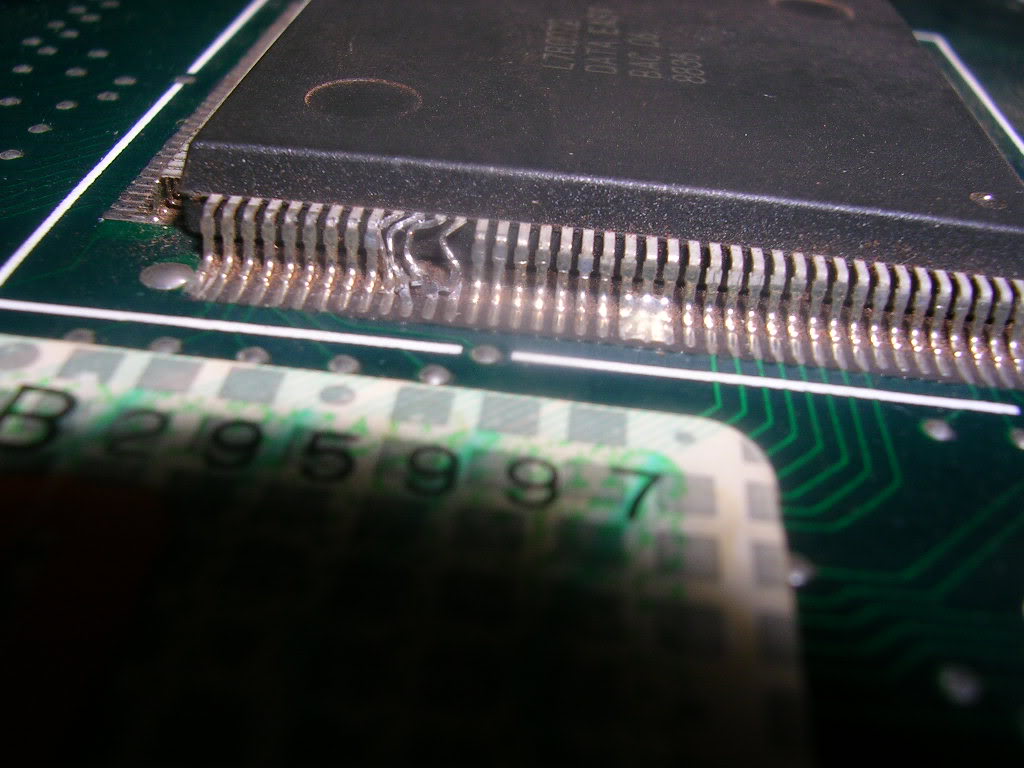
...a corner of another board probably did this when they were piled up in the box on the kerb. The board also had a dead short from 5V to ground which I assumed was the mashed custom, I had attempted to find out if the bent pins were power pins and found one of them connected to 5V and ground. At this stage I hadn't powered this up as depending on what the mashed pins were I could destroy the chip.
I had hoped to save the chip but the pins were only holding onto the chip body by a thread and one fractured off flush with the chip body as soon as I tried to straighten it.
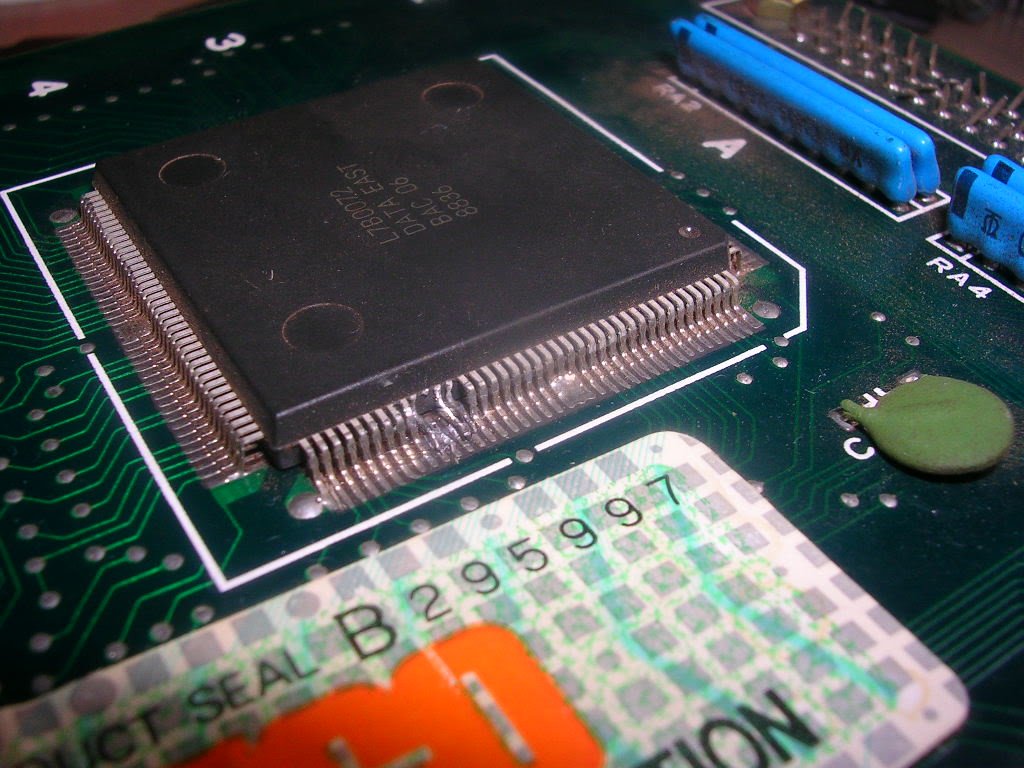
The flash makes it look like there is still some leg to connect to but in reality it was sheered off neatly. It is possible to grind away the chip casing to get access to more of the stump but I had no idea if the chip was any good so it seemed a bit of a waste of time, especially when the more insane "replace the chip" idea actually appealed. Time to crack open the ChipQuik again and fully lose my SMD virginity. I had used ChipQuik to replace an 80 pin CPU on a Midnight Resistance board but this was another step up, much finer legs and a grand total of 160 of them.
So, flux plus Chip Quik added and after a bit of a struggle...
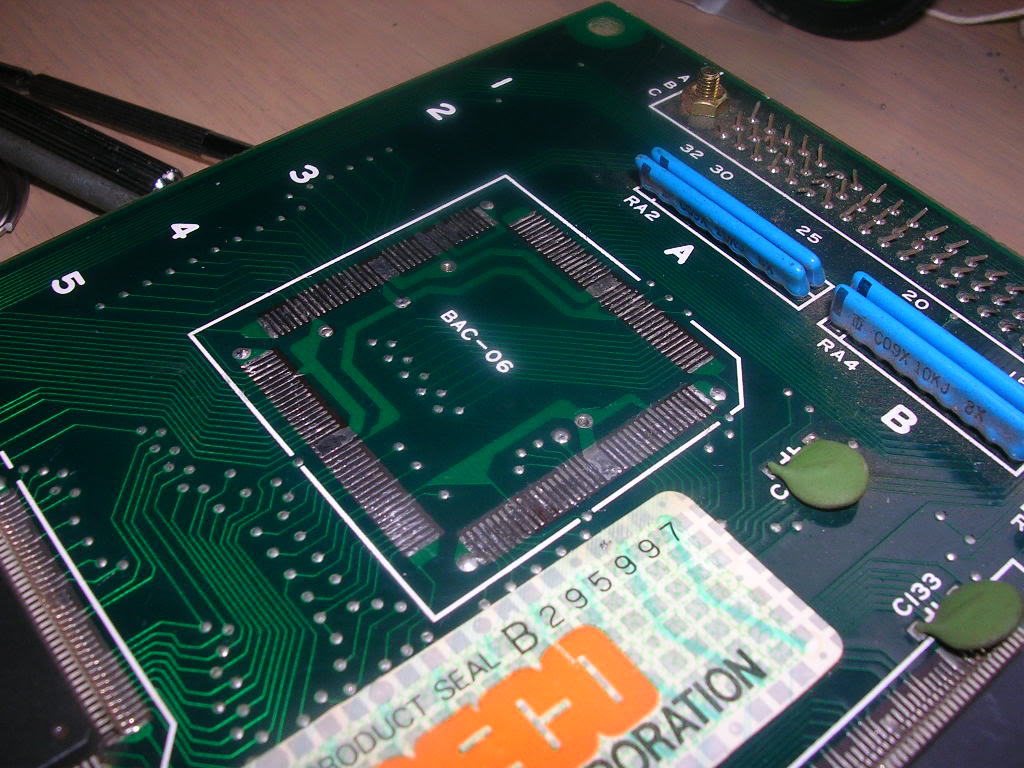
.. one mashed chip removed. It looks like a PCB pad has come off with the chip...
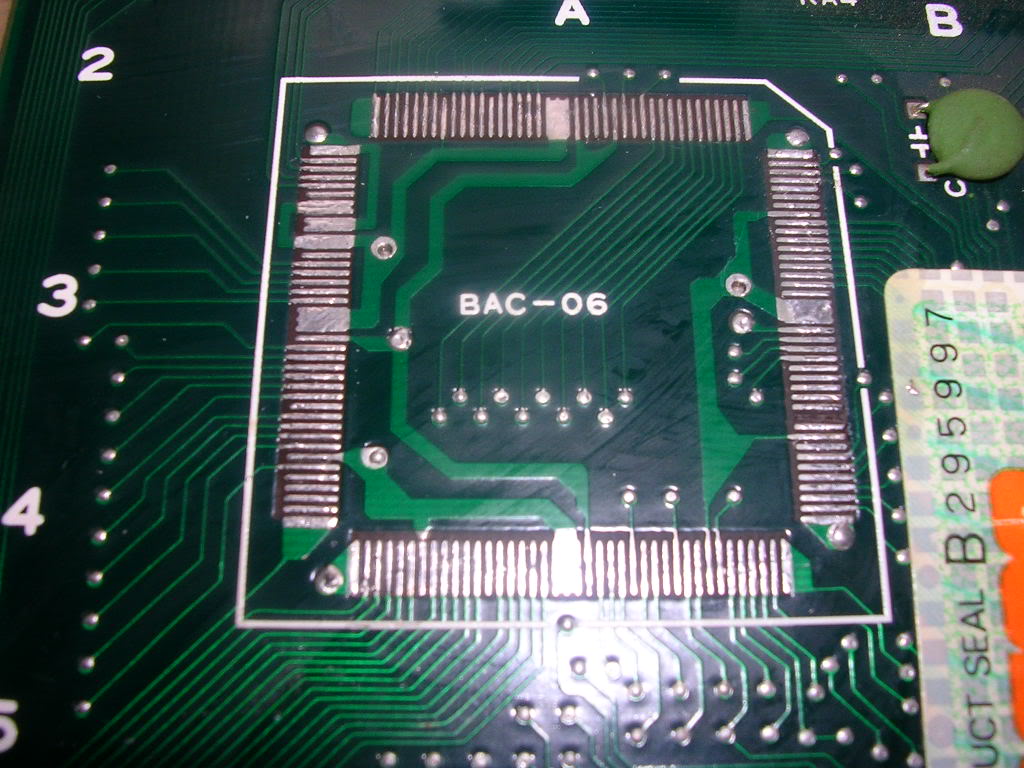
...but I could find no trace of it on what I removed but it is at the area where the pins were trashed so presumably it got torn up then, thankfully it is one of the few pads that don't connect to anything so its loss is not a problem.
At this point I was expecting the dead short to be gone, I was disappointed, I still a complete short from 5V to ground somewhere. A longer eyeball check found this...
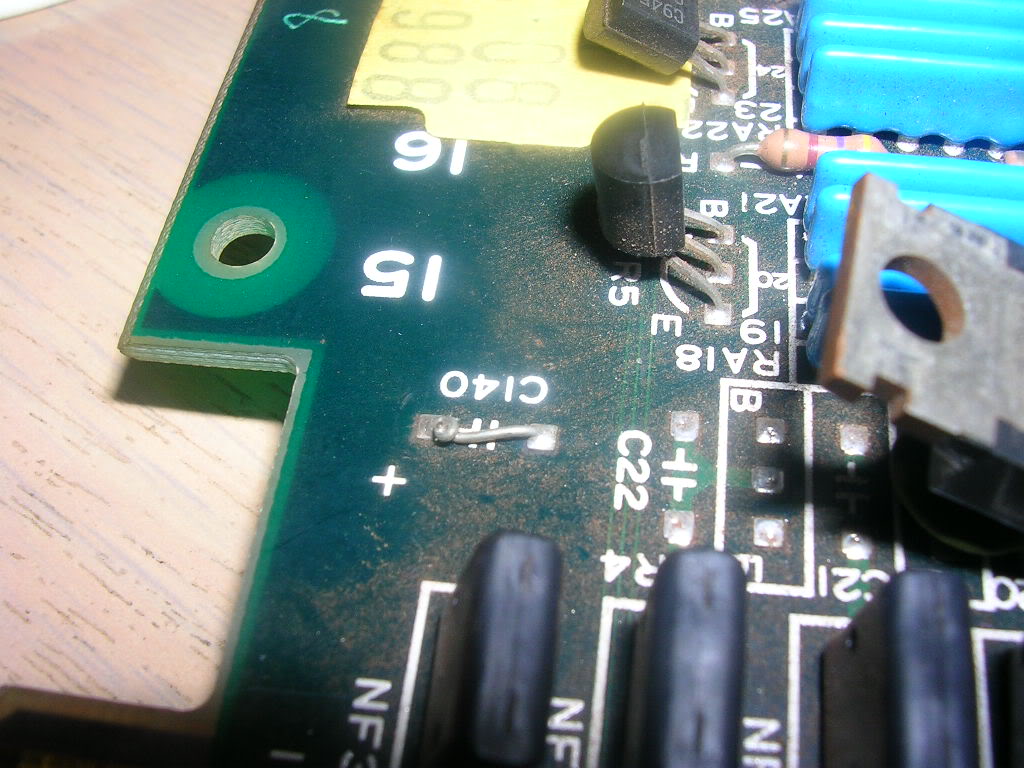
... what looked like a wire link soldered across where a capacitor should be, by the naked eye it looked very deliberate but a close up photo shows what it really is. It is the leg stumps of the long gone capacitor, they have been tightly twisted together and then sheared off leaving a very neat, very tight short circuit. Once that was cut the short was gone, so I desoldered the remains and fitted a 100uF 16V cap as originally would have been there.
Powering up the board gave me a white screen, which faded to black, and then back to white again. At this point I swapped the Birdie Try ROM board onto my the Heavy Barrel motherboard which is another game in this board family. It fired up as a perfectly healthy Birdie Try, what I did notice was that elements on the title screen faded in and out to the same timing as the blank screens I got, something at least was alive.
Huge holes in the graphics was not that surprising as one of the BAC06 chips was no longer there, so time for some micro soldering. I have a badly corroded Midnight Resistance board that had three of these customs on it so one was chosen for surgery.
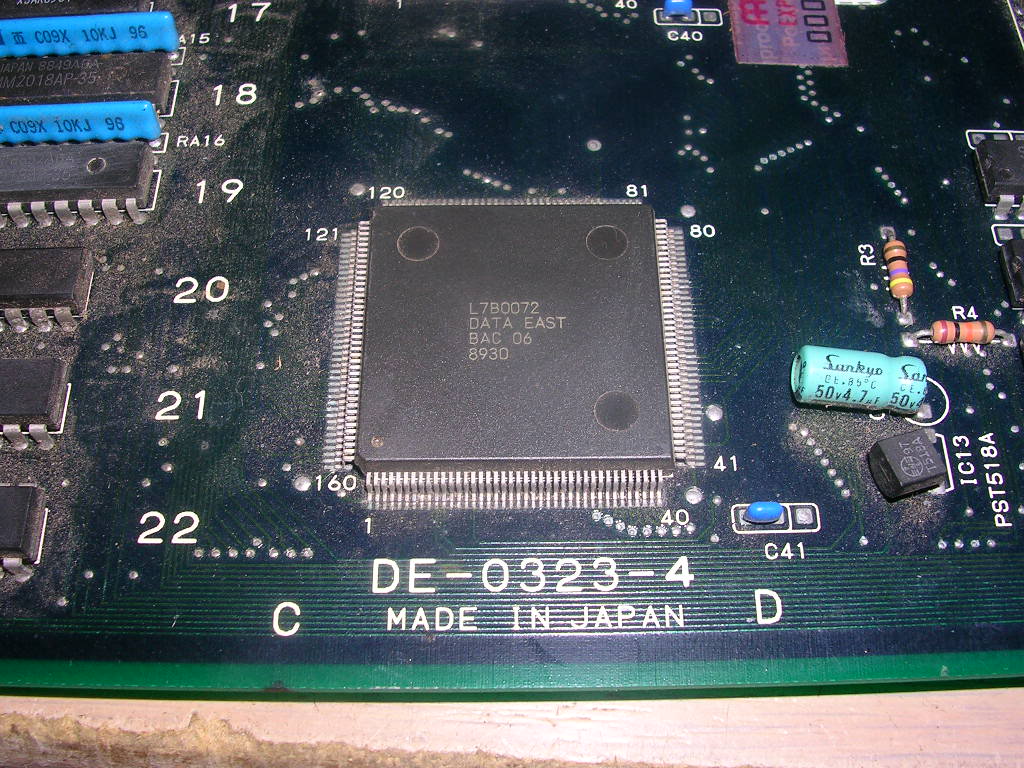
I had struggled to get the Chip Quik to stay molten long enough before so this MidRes board spent 20 minutes sat over one of the heating vents to get good and hot. With less heat-sinking going on it was hugely easier to get this one off than the original one was.
Soldering the new one in took a fair while, getting it lined up and soldered is not too hard but making sure there are no solder bridges between the tiny legs is what takes the time. Lots of flux and a few goes with my desoldering station later and I had a chip on the board...
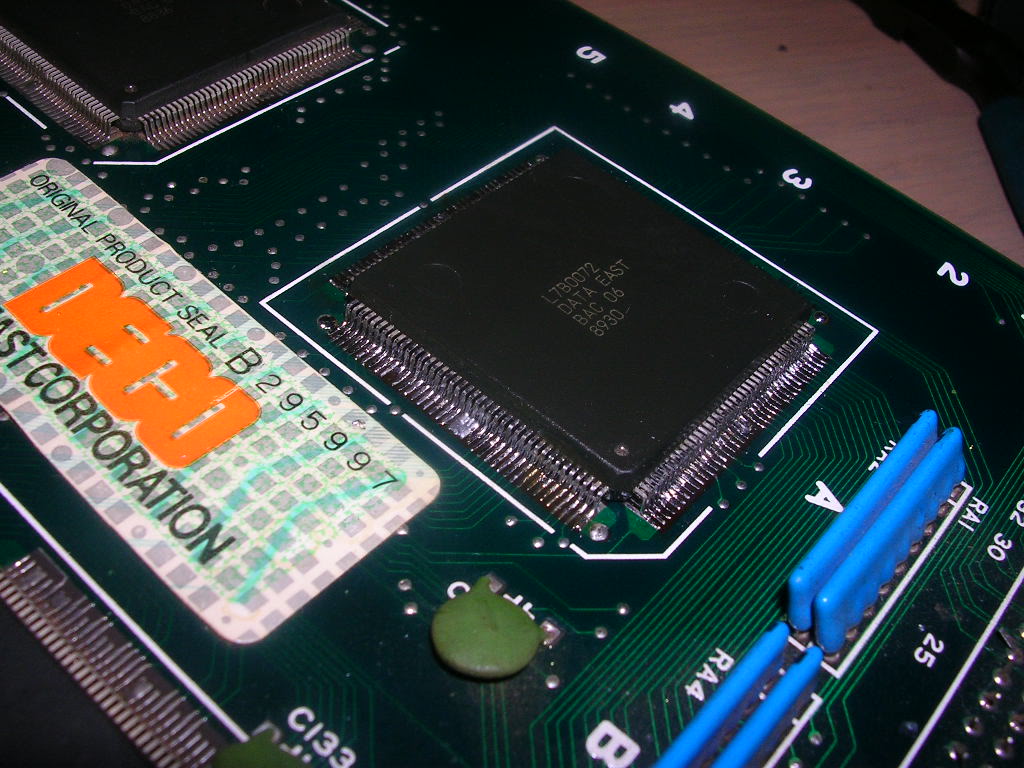
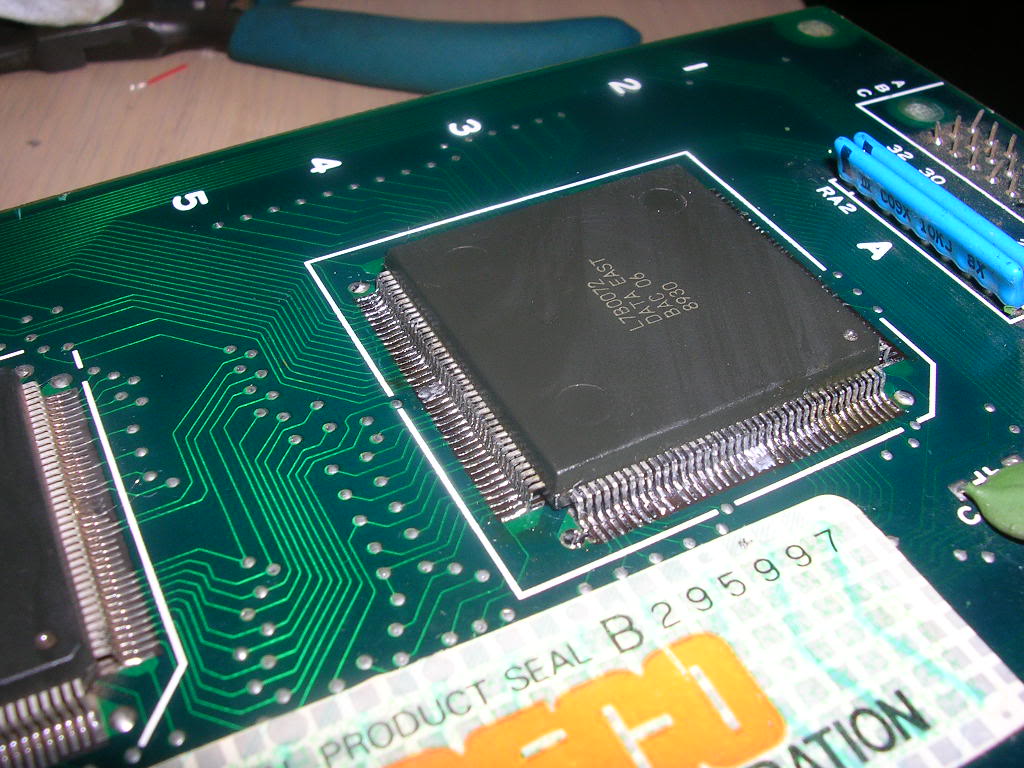
... as it is still a bit fluxy and shiny the photo looks like there is a lot more solder there than there really is, I am pretty happy with how neat it looks in real life. Prior to power up I went round and found 3 more using a jewellers loupe and removed those.
Flicking on the power did not result in smoke or sparks, what I got was...
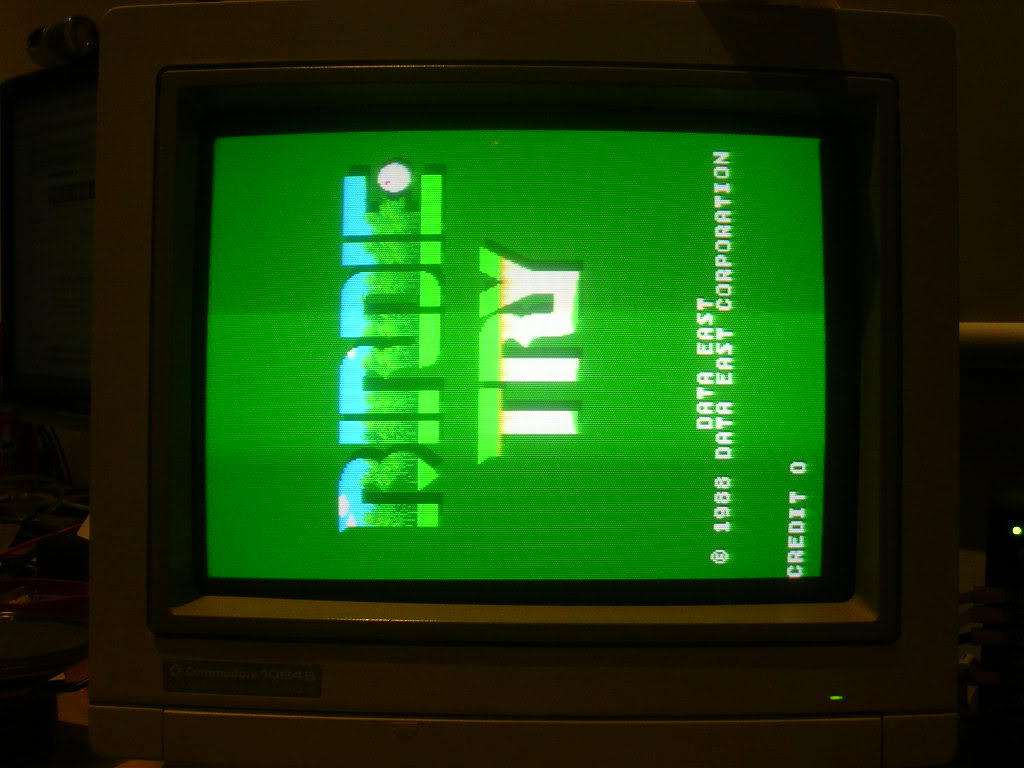
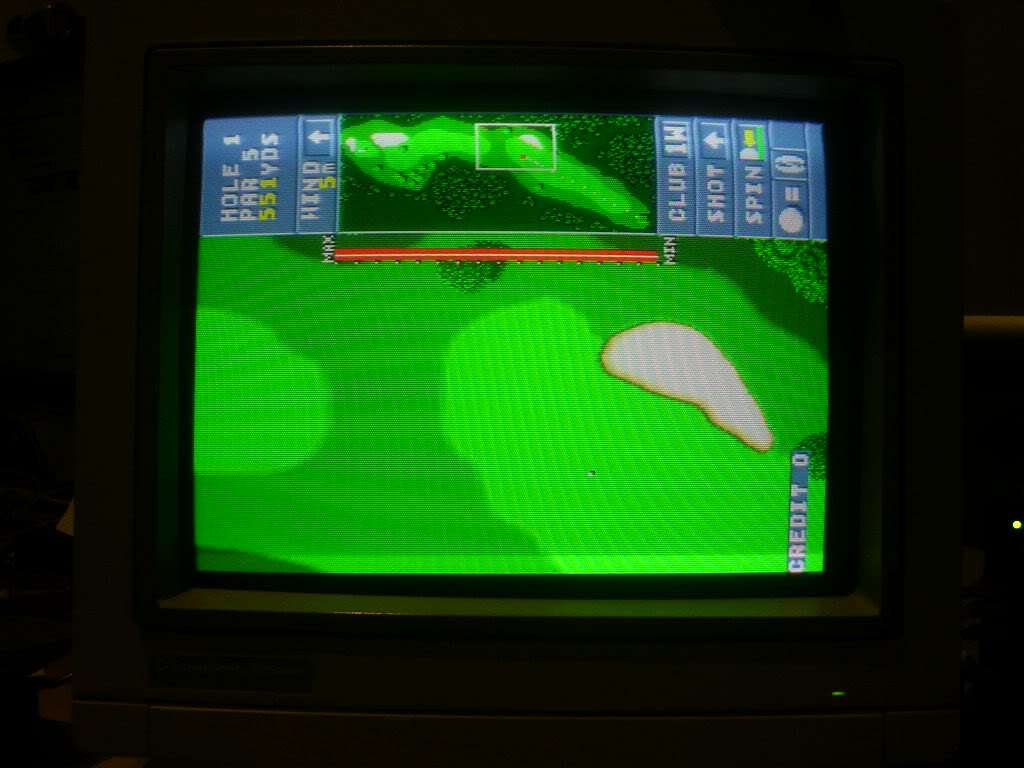
...a fully working board!
I have no great love for the game, and am looking at converting it to Heavy Barrel, it has the rotary joystick connectors on the ROM board though I don't think Birdie Try uses them, I may struggle though as all these Data East games on this platform use an Intel security CPU, which probably isn't something the MAME ROM set can help recreate.
Actually it occurred to me that possibly Birdie Try doesn't really make full use of the graphics hardware that this main board provides, ie Birdie Try seems to be only one graphics plane and has pretty limited scrolling, that would explain why a single missing tile map chip could take out all the graphics, assuming they are parallel and not chained. So I have just swapped the Heavy Barrel ROM board onto this main board to fully test it, and it works perfectly, so this might be the first time some of the chippery has had anything to do since it was made.
Pretty pleased with it none-the-less.